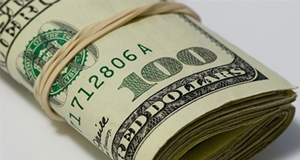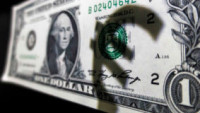 The US dollar selloff continued as the markets pared back expectations of Fed hikes this year
The US dollar selloff continued as the markets pared back expectations of Fed hikes this year
The dollar index fell below 95 to a five-month low. While the headline JOLTS data underscored the resilience of the US labour market, the data breakdown shows there is weakness in the US economy. The hiring ratio remains weak although vacancy rate kept close to a high level.
If the employment numbers start to show cracks in the US labour market, one of the two key pillars of US monetary policy will be weaken, with the other being inflation. Declining investor’s outlook for the US economy may be the reason why the rally in the US equities seems to be losing steam.
While it is true that US indices gained yesterday, but given the more dovish-than-expected stance from the Fed, we would expect a stronger rally. Trading volume in the S&P is also falling since February, and the number of constituent firms trading above their 50-day moving average has hit over 90%, where over 80% is a common signal that we could see a pullback.
The macroeconomic situation is also not supporting a sustained rally in global stocks, and with falling effectiveness of central bank policies, investor may not be willing to push global stocks higher.
The sharp pullback in the USD has clearly raised the prospects that the greenback could slip into a downtrend. In my view, while the lower expectations of Fed rate hikes have certainly prompt many investors to pare back their long dollar bets, we are not in a downtrend situation.
First, the Fed is still on a tightening bias. They are looking at two rate increases this year, followed by four in 2017. Second, other countries may be alarmed at the rate of dollar depreciation and take reactive policy action, thereby tempering the USD decline.
Yen protected at 110?
The Japanese yen has received much demand in recent months due to more demand for safe-haven assets and lower US rate hikes expectations. At the start of the year, a stronger yen was not on the radar of many analysts, but as the year and new developments unfold, they are looking at the possibility of more yen strength more closely.
After the FOMC meeting, USD/JPY fell to a 17-month low of 110.67 but quickly bounced back to nearly 112 within 30 minutes. It seemed to be a suspected BOJ intervention. This suggests that there is a tolerance level in JPY that the BOJ is looking at.
For now, it seems that the line in the sand is drawn at around 110-111, which was the level that USD/JPY were at before the BOJ surprised the markets with an unexpected expansion of its QQE programme in October 2014.
Meanwhile, we could see more BOJ action after they pause at the recent policy meeting, and buy some time to assess the impact of the negative rates on the economy. Negative rates appeared to have some adverse consequence, especially concerning the short-term money markets, where lower liquidity has caused the closure of money-market funds.
Negative rates may also squeeze bank profits. This means that if BOJ is able to discriminate which entity is subjected to negative rates, thereby ironing out technical problems, the bank may be paving the way for deeper negative rates at the April meeting.
Bernard Aw
Market Analyst, Singapore













